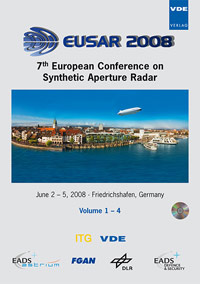A Special Point Target Reference Spectrum for Spaceborne/Airborne Bistatic SAR Processing
Konferenz: EUSAR 2008 - 7th European Conference on Synthetic Aperture Radar
02.06.2008 - 05.06.2008 in Friedrichshafen, Germany
Tagungsband: EUSAR 2008
Seiten: 4Sprache: EnglischTyp: PDF
Persönliche VDE-Mitglieder erhalten auf diesen Artikel 10% Rabatt
Autoren:
Wang, Robert; Loffeld, Otmar; Ul-Ann, Qurat; Nies, Holger; Ortiz, Amaya Medrano; Knedlik, Stefan (Center for Sensorsystems (ZESS), University of Siegen, Paul-Bonatz-Str. 9-11, D-57068 Siegen, Germany)
Inhalt:
This paper focuses on the bistatic point target reference spectrum which is specially developed for the spaceborne/airborne experiment (TerraPAMIR experiment: TerraSAR-X is transmitter, and FGAN’s airborne PAMIR system serves as the receiver.). In this spaceborne/airborne experiment, receiver works in the inverse sliding spotlight mode while transmitter operates in the sliding spotlight mode to achieve a tradeoff between the azimuth scene size and azimuth resolution. Such a mode is generally called double sliding spotlight mode. Because of this especial double sliding mode, the echoed signal will have two characteristics. Firstly, both transmitter and receiver have the very small synthetic aperture time; secondly, the receiver works in the high squint mode while transmitter works in the small squint mode. According to these two characters, different approximation models are employed to simplify the slant range histories of transmitter and receiver into the second-order polynomial model. Based on the presented model, a two-dimensional space-variant point target reference spectrum (BPTRS) is derived.


